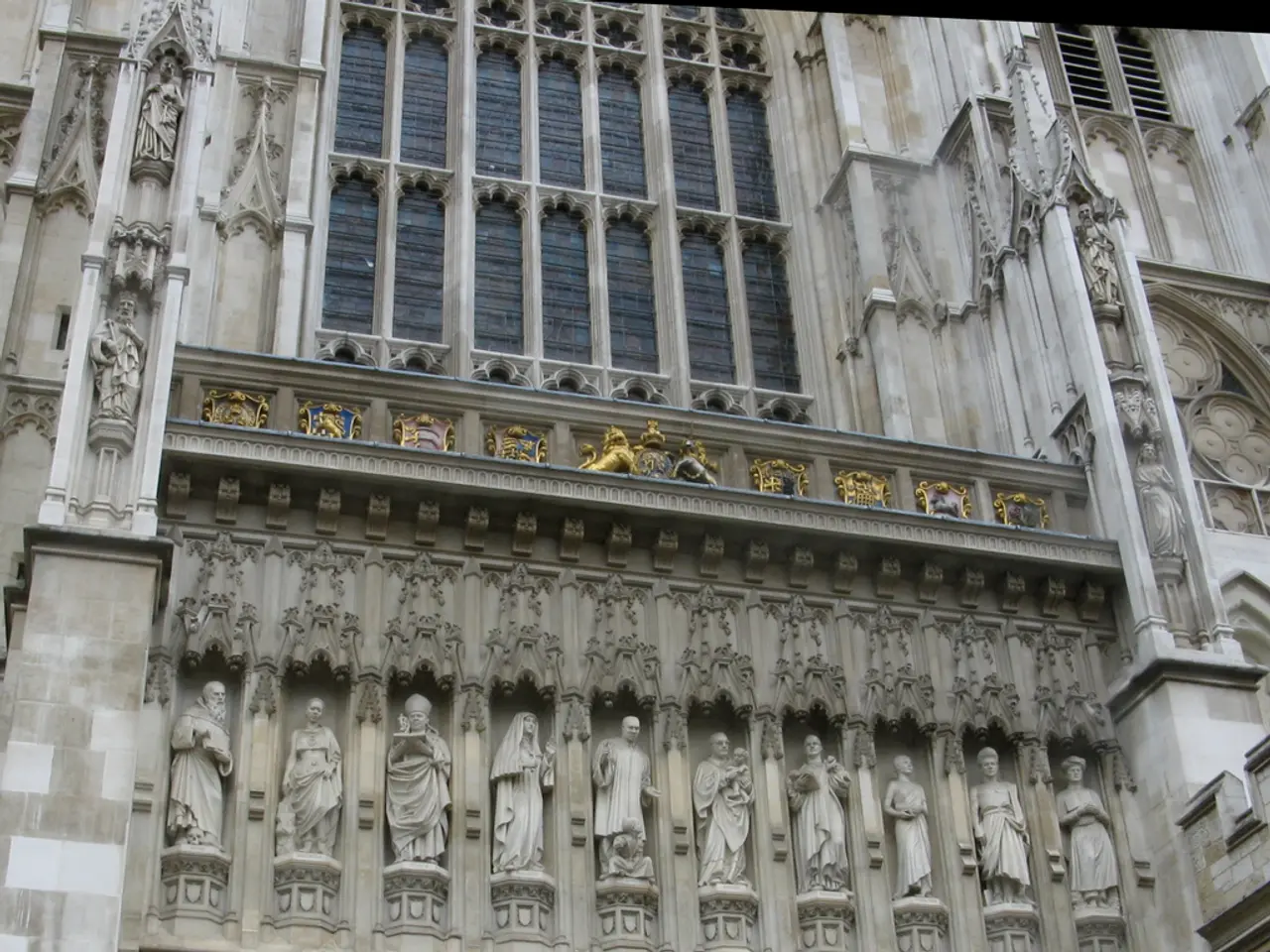Architects experiment with 3D printed glass bricks as a novel material in construction projects
The construction industry is on the brink of a significant transformation, with a new type of reconfigurable masonry made from 3D-printed, recycled glass being developed by MIT engineers. This innovation could be a game-changer for circular construction, a proposed approach that aims to promote sustainability and reduce the environmental impact of the construction industry.
The goal of circular construction is to create a closed-loop system for building materials, minimizing waste and maximizing reuse. By reusing materials instead of manufacturing new ones, the construction industry's embodied carbon can be reduced significantly. This embodied carbon, which includes greenhouse gas emissions from manufacturing to demolition, is a major focus of circular construction.
The new masonry, currently being developed using a custom 3D glass printing technology provided by MIT spinoff Evenline, is designed to be as easily reconfigurable as Lego bricks. The glass bricks are strong, multilayered, and shaped like figure eights, designed to interlock like Lego bricks, making them ideal for reuse and repurposing in various building structures.
In mechanical testing, a single glass brick withstood pressures similar to that of a concrete block, demonstrating its robustness and potential for wide-ranging applications. The use of recycled glass in the new masonry aligns with the goal of promoting sustainability in the construction industry.
Research at institutions like MIT’s Concrete Sustainability Hub is exploring how recycled glass can be effectively incorporated as supplementary cementitious material (SCM) in 3D-printed concrete. This supports circular construction by reducing reliance on virgin materials and lowering carbon emissions.
The potential impact of this technology includes reducing carbon footprints in construction, improving material reuse, and enabling more adaptable building components. Reconfigurable masonry elements produced by 3D printing with recycled glass composites can facilitate urban mining practices—recovering and reusing materials from existing buildings—thus advancing circular economy principles in construction.
These reconfigurable elements can allow structures to be more easily deconstructed, reused, or repurposed, significantly reducing construction waste. Although direct reports on fully developed 3D-printed recycled glass masonry specifically designed for reconfigurable modularity are limited, ongoing advances in 3D printing with recycled composite materials and the focus on sustainable construction at leading research hubs suggest that these technologies will become increasingly viable and impactful in the next few years.
In a remarkable demonstration, the researchers constructed a wall of interlocking glass bricks to showcase the structural potential of this innovative masonry. This development could potentially supply generations of buildings using the same physical building blocks, creating a sustainable cycle for building generations.
While 3D-printed recycled glass reconfigurable masonry is not yet widespread or fully commercialized, active research and pilot applications indicate its high potential to transform circular construction by lowering emissions, enhancing material reuse, and facilitating adaptable, sustainable building methods. The future of construction is undeniably heading towards a more sustainable and circular approach, and this new masonry could play a significant role in this transition.
- The MIT engineers' development of reconfigurable masonry made from 3D-printed, recycled glass could revolutionize the construction industry, aligning with the goals of circular construction to minimize waste and promote sustainability.
- The use of recycled glass in the new masonry, tested for robustness, aligns with the research at institutions like MIT’s Concrete Sustainability Hub, aiming to reduce reliance on virgin materials and lower carbon emissions.
- The potential of 3D-printed recycled glass masonry includes facilitating urban mining practices, helping advance circular economy principles in construction and making structures more easily deconstructed, reused, or repurposed, thus reducing construction waste.
- The transformation of the construction industry toward a more sustainable and circular approach is becoming increasingly evident, and this new masonry made from 3D-printed, recycled glass could significantly contribute to this shift, lowering emissions, enhancing material reuse, and promoting adaptable, sustainable building methods.




